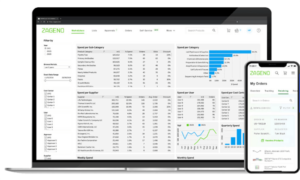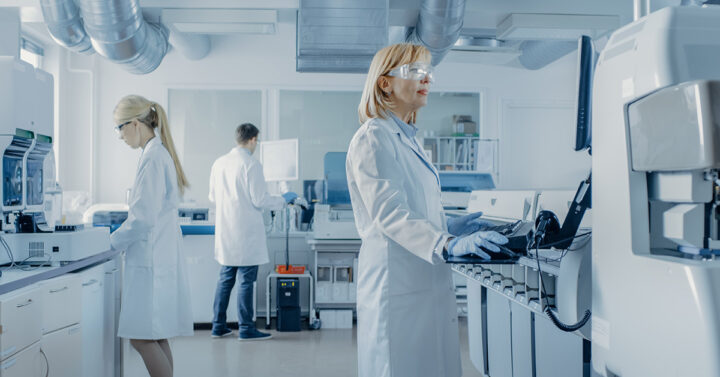How to Future-Proof Your Biotech Lab

The future of biotechnology conveys an exciting realm of possibilities for new research. While your average lab technician may not be as eccentric as Doc from Back to the Future when conducting research, nor equipped with futuristic tech akin to The Matrix, the future of labs in biotechnology is an area of untapped potential, productivity, and success.
The future of biotech labs is automated and succinct, yet flexible, and will assist in making the jobs and lives of lab technicians run more smoothly and efficiently. It also involves incorporating modern technologies such as lab and project management software, as well as collecting thorough data on all processes.
It’s important to note, a major impetus for labs adopting strategies that will help them to future-proof spaces and processes has been the pandemic and its effect on the lab supply chain. With a strain on lab products and equipment, lab managers have become more reliant on optimized processes, technology, and more efficient lab operations to sustain research initiatives.
“Lab of the future is more an evolution than a revolution. In the lab of the future, everything will be connected. Instruments will talk to one another.” This is ZAGENO Podcast.
For lab managers and technicians looking to transform their biotech labs into adaptable, flexible, tech-driven research environments, there are a number of techniques to future-proof your lab and drive successful outcomes with sustainable systems.
Create Flexible Lab Systems
Creating flexible lab systems is a key component to future-proofing your biotech lab. Similar to how combining software and equipment increases problem-solving capabilities, and exposes areas for optimization, so will the creation of a flexible lab system.
A flexible system in a future-style lab might look like a central hub where data and information is accessible to all. This hub may also involve some form of space-sharing, with the option to book working hours in a shared lab environment, similar to co-working spaces.
Offering flexibility with data-sharing in addition to space-sharing, also removes the physical restrictions of a biotech lab. A flexible lab system holds space for scientific research to bloom beyond the walls of a set location, encouraging collaboration throughout multiple biotech labs across the country, or around the world.
Incorporate the Latest Lab Technology
Transforming your research environment into a lab of the future, requires the latest lab tech and equipment. By doing so, this creates more opportunities for organized digitization of lab records, and reduces clutter of lab files and paperwork.
Going paperless proves to be not only a time-saver, but also a space-saver. Gone are the days of cramped rooms filled floor to ceiling with paperwork, charts, and data, creating more claustrophobia than excitement about new research.
When introducing new tech and equipment to your lab, it’s important to recognize the development of technology is an ever-changing landscape that can be difficult to keep up with. An inclusive and adaptive lab management platform involving different software and web-based tools can aid in meeting the breakneck speed of technological developments.
The incorporation of such technologies as augmented reality and virtual reality, allows for increased consistency among lab processes, as well as increased accuracy in data retention and quality. They also encourage proper health and safety measures within the lab.
Automate Lab Workflows
The automation of a smart lab is not always an easy task. Despite the necessity for collaboration on the part of manufacturers and biopharma companies alike, these players often work in isolation, creating gaps in the overall workflow. Lab technicians also spend an increasing amount of time as data wranglers, collecting and mining user-friendly data when their energy should be focused on conducting analyses.
However, when automation does sync up, it increases lab productivity and provides opportunities to focus on more demanding lab tasks. When used in tandem with the latest lab technology, workflow automation also reduces the risk for potential human error when conducting experiments. Furthermore, it assists in accurately maintaining research findings throughout the post-experiment stage.
Automation is most efficient when applied to data entry, including the collection of research that has to do with experimental hypotheses and analytical data. By utilizing modern technology in the lab, this empowers lab technicians and staff to become their own data analysts.
Collect Data on All Research Processes
When integral details throughout lab processes are documented, this not only aids in building a digital hub of information for future research, but also encourages a more efficiently-run research environment. Collecting information on lab processes might include detailing experiment results, or documenting research notes taken throughout the experiment.
By collecting extensive data on biotech lab processes, this allows for enhanced data-monitoring in order to reduce the “down-time” of technicians and staff.
It also helps to troubleshoot problems that arise within the lab, as more data equals more potential solutions to equipment problems and roadblocks to data analyses. Devising a 360-degree point of view for collecting lab data, allows for a complete picture to be painted of lab procedures.
Use Modern Collaborative Software Technology in the Lab
The utilization of modern technology in the biotech lab not only produces an environment for increased productivity, but also prevents delays in research as a result of missing documentation.
Trends in biotechnology include the usage of modernized lab tools and project management software. Platforms such as ZAGENO offer cloud-based ordering of lab supplies, management and optimization, helping create fulsome and efficient biotech labs. Creating a flexible lab system is also achievable with ZAGENO thanks to its central collaboration hub, where team members can share budget information, supply history, and workflow data.
Increased automation throughout the lab workflow is also achievable with newer biotech software platforms like Geneious, saving lab technicians time by analyzing genetic data. Its capabilities include manipulating various types of DNA and cloning tools and features are packed into a user-friendly, clickable interface. In addition, Infinity offers biotech labs customizable frameworks for creating their own processes, and provides a shared workspace for remote team members to collaborate on research and data analysis.
Incorporating project management software into your biotech lab can also bring your research environment up to speed with modern technology. Software such as Asana allows lab managers to assign tasks to technicians, track progress of individual team members, and review scope of research.
For more modern tech for the R&D lab, take a look at the Best Remote Collaboration Tools for Lab Managers.
The Future of Biotechnology
Automating workflows and streamlining lab processes will assist in preparing science labs of the future. Incorporating modernized forms of lab technology and equipment, including digitizing paperwork, research findings, and data analysis, will also free up more time and energy to spend on the pursuit of future research.
While biotech labs may not resemble something out of a science fiction movie (not yet at least), future-proofing your research environment will certainly make the lives of your lab staff and technicians a whole lot easier.


